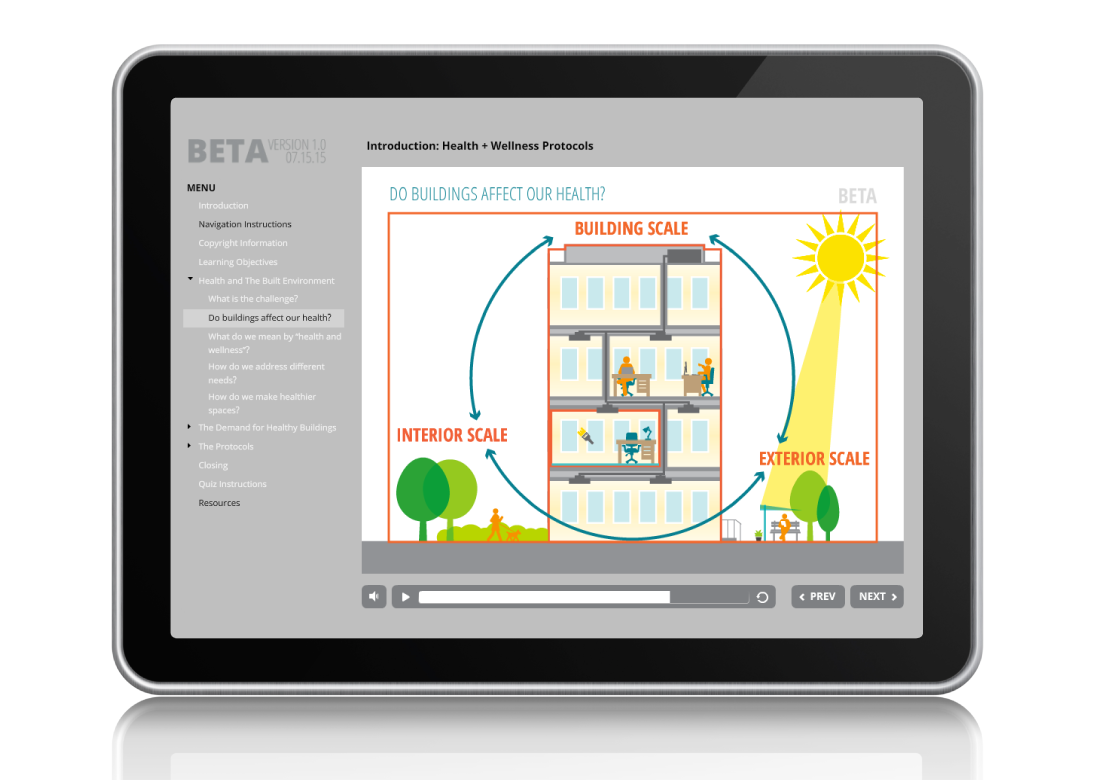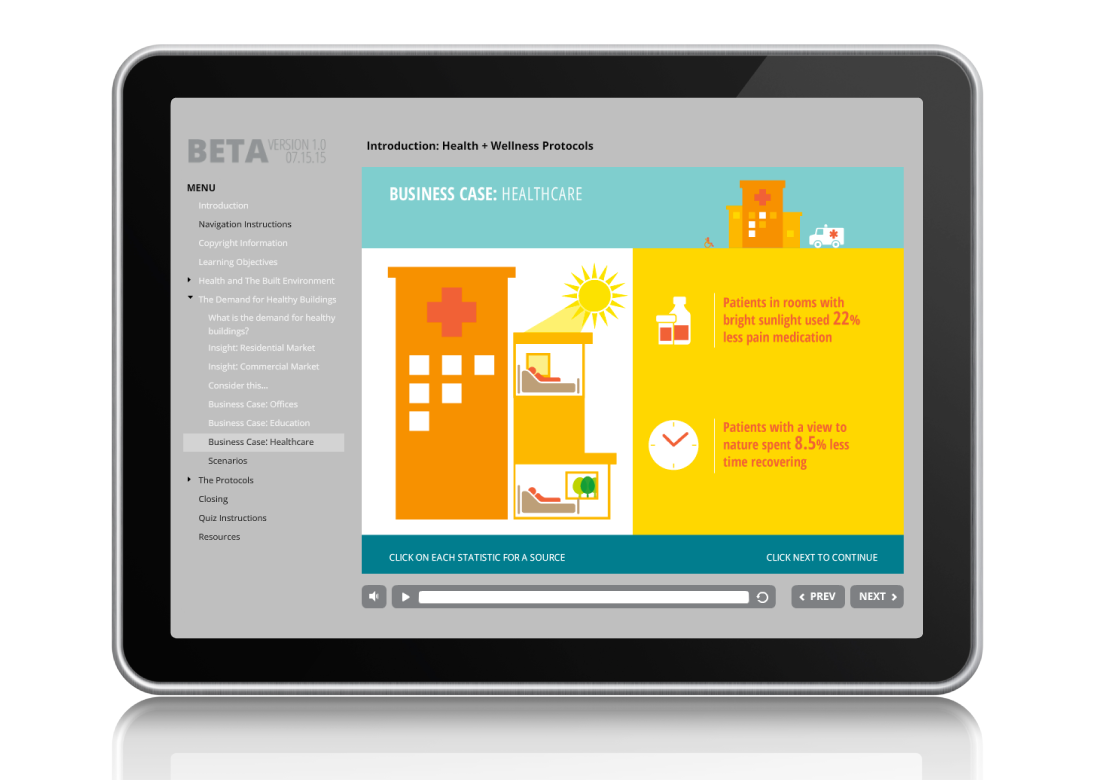Health and Wellness Initiative for the Built Environment
In 2014, the American Society of Interior Designers (ASID) and its partners (listed below), submitted a commitment to action to the Clinton Global Initiative to development of Health and Wellness Protocols for the built environment. The protocols are intended to be used by architects and interior designers to create spaces that promote occupant health and wellness across multiple building types, and specify the use of healthier products and materials.
To support ASID and their partners in this health and wellness initiative, we developed a series of five e-learning/m-learning modules that explore specific human-centered challenges and solutions for interior spaces.
The Health + Wellness Protocols modules, which can be taken at ASID Academy, include:
- HWP 1: Introduction
- An overview of the ways that the built environment affect human health. This modules provides background knowledge for designers to lead the conversation with their clients about the benefits of healthy interior spaces and how design strategies can impact health outcomes.
- HWP M2: Interiors, Foundational Concepts
- An overview of market opportunities for healthier interiors and buildings and the benefits to design professionals of developing expertise in this growing field. Participants learn about the major body systems that affect physical health, mental health, and wellness, as well as design opportunities that can promote health of these systems. The module introduces core topics that designers need to understand to select materials, products, and components that support healthier interiors.
- HWP M3: Interiors, Materials
- An overview of the processes and tools needed to select healthier materials.
- HWP M4: Interiors, Products
- An exploration of products that enhance the health of a space, including furnishings, lighting fixtures, plumbing fixtures, appliances and cleaning products.
- HWP M5: Interiors, Components
- An examination of the building components (core, shell and major building systems) that shape our built environments and how designers can make selections to improve the general health and safety of interior spaces.
Architects and interior designers can earn continuing education unit (CEU) credit at AIA and IDCEC for completing these modules.
The commitment partners for this health and wellness initiative included:
- The American Chemistry Council
- AkzoNobel
- Cradle-to-Cradle Products Innovation Institute
- CertainTeed/ Saint-Gobain
- IWBI/ WELL Building Standard
- Gensler
- HIMSS
- Iotas
- Lake Nona Institute
- Meyer Scherer Rockcastle, ltd (MSR)
- National Institutes of Health/ Health in Buildings Roundtable
- Steelcase
- UL
- The Vitality Institute
- Wolf-Gordon
“Cantilever Instruction + Design has helped us realize our most innovative, cutting edge eLearning content to date. Their courses are creative and engaging, and their timely client service is excellent. Most importantly, our members and industry partners have responded quite favorably to the courses they have developed, like our Health + Wellness Protocols series, which are among the most popular that we offer.”

Click on each video to see course samples.



